#Franciscans
Text

St. Francis of Assisi, founder of the Franciscans.
Did you know his nickname was "Il Poverello" or The Poor little Man.
.
I've always seen him as generous and warm man, and I can imagine him being lively and extroverted. Someone you'd like to be friends with.
#One of the most well known saints and one that is attributed with the love of animals#He's one of my favorite saints#Saint Francis of Assisi#Saints#Catholic art#my art#christianity#friars#Franciscans#St. Francis of Assisi#catholicism
158 notes
·
View notes
Text

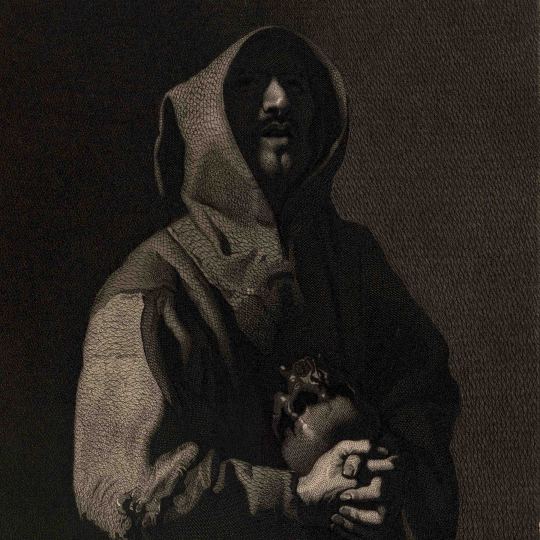



#art#etching#engraving#meditation#religious art#franciscans#catholicism#skull#saint francis of assissi#francisco de zurbaran#alponse charles masson#st. francis in prayer 1849
186 notes
·
View notes
Text
While we await the results of St Mary Magdalene vs. St Dymphna, here's another poll for all of you!
Here are some resources to learn more about each of them:
Religious orders in pictures
Most well known religious orders
A video on religious orders
#cistercians#redemptorists#jesuits#salesians#dominicans#franciscans#missionaries of charity#benedictines#carmelites#carthusians#catholic saint tournament#catholic#catholicism#catholic saints#christianity#polls#theology#tumblr polls
64 notes
·
View notes
Text



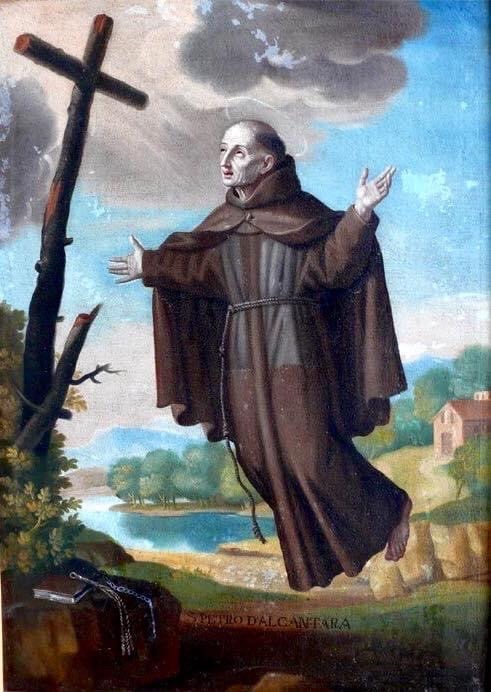
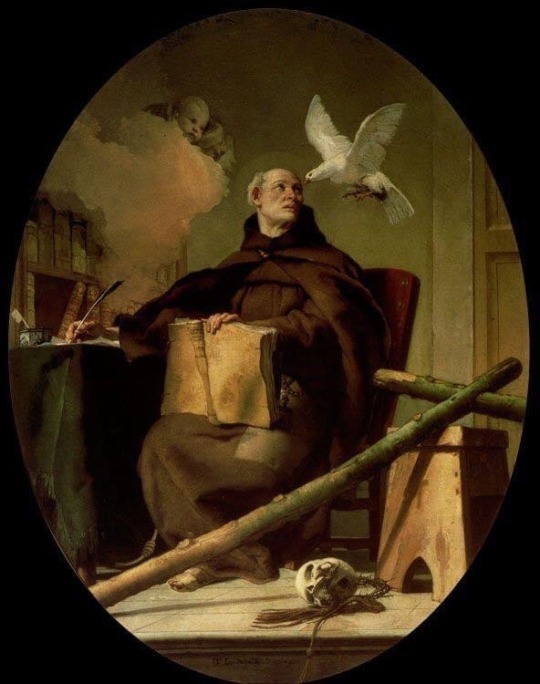
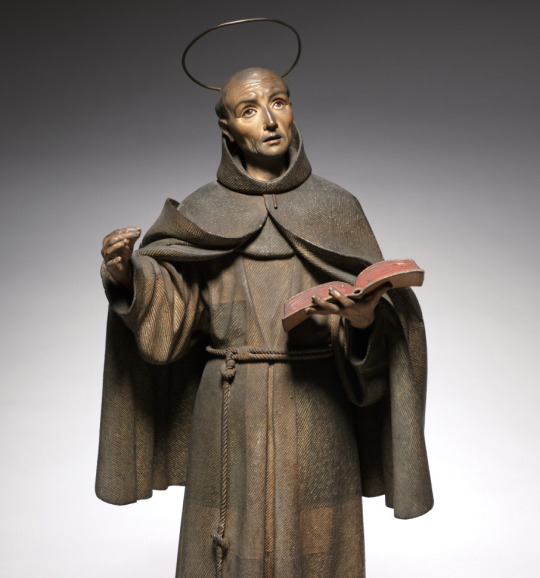

Hodie XIX octobris… Sancti Petri de Alcantara, Sacerdotis ex Ordine Minorum et Confessoris.
19 notes
·
View notes
Photo
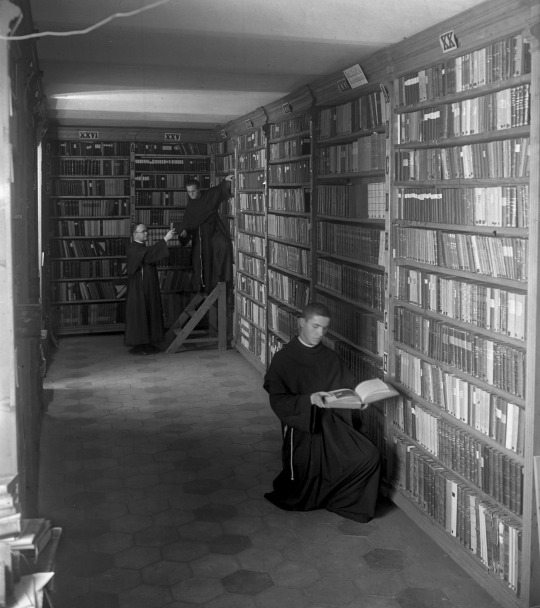
Biblioteka zakonu franciszkanów w Krakowie (1937).
#Polska#Kraków#II RP#1937#lata 30#zakon#klasztor#biblioteka#franciszkanie#Poland#1930s#monastery#library#franciscans#old photo
91 notes
·
View notes
Text

…unless a kernel of wheat falls to the ground and dies, it remains only a single seed. But if it dies, it produces many seeds. Anyone who loves their life will lose it, while anyone who hates their life in this world will keep it for eternal life.
~ John 12:24-26
2 notes
·
View notes
Text
日本26聖人の殉教から400年目の1997年2月5日に、長崎で、TLEAの教会主催の殉教記念聖会が初めて行われました。
その時に初めて長崎に行きました。
今年も殉教記念聖会が行われます。
配信もされます。
ぜひご参加ください。
4 notes
·
View notes
Text
Brother Sun, Sister Moon

Men and women CAN be friends when they both love God.
#san francisco#saint francis of assisi#saint clare#clare of assisi#aeshna's art#brother sun sister moon#franciscans#poor clares#artstreet medibang#medibangpaint#medibang paint#medibang art#medibang#Spotify
5 notes
·
View notes
Text
Enough sexy generic nuns I want to see you try to make a Franciscan fuckable. Go on.
3 notes
·
View notes
Video
youtube
Verdi’s Requiem: “Dies irae”. Herbert von Karajan.
#herbert von karajan#von karajan#verdi#requiem#dies irae#Horst-Wessel-Lied#Europe#European music#European values#European culture#classical music#thomas of celano#franciscans#day of wrath
16 notes
·
View notes
Text


His name is Giovanni di Pietro di Bernardone or St. Francis of Assisi.
I didn't knew he was named "Francis" by his father, who he did not have the best relationship with. Despite that, he rose above it and responded charitably.
#You could guess my confusion when I learned about his real name#apologies for my short break I was having anxiety#trying to get myself back together#Gonna render a better piece soon#St. Francis of Assisi#Saints#Catholic art#catholicism#Christianity#franciscans
191 notes
·
View notes
Photo
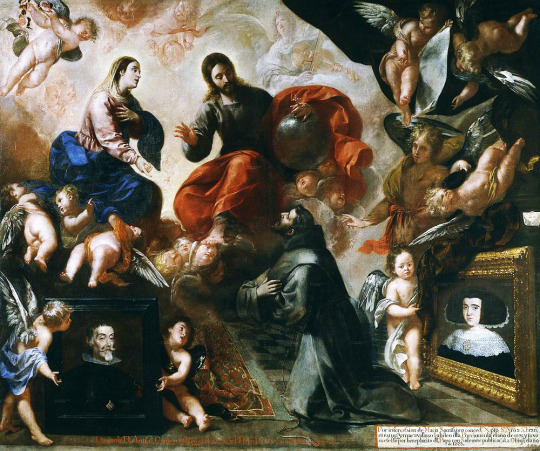
Por interceſsion de Maria Santiſsima conced,o Χρt̃o, ,Sr Nr̃o a S.n Fran.o el estu.cio y maravilloso Iubileo đla Porciuncula el año de 1221, y iuvo su efecto por beneplacito đl Papa con Solemne publicac,o đ, 3 Obisp,s el año de 1223.
San Francisco de Asís en la Porciúncula, con los donantes Antonio Contreras y María Amezquita
by Francisco Caro (Sevillan, 1627 – 1667)
oil on canvas (330 o 273 cm), 1659
Museo de Bellas Artes de La Coruña
#691482294332047360/2Lh9d28k#Francisco Caro#Catholic Church#Order of Friars Minor#Blessed Virgin Mary#St Francis of Assisi#Monarquía Hispánica#Spain#17th century#1659#Baroque#Franciscans#Museo del Prado#sacred art#oil on canvas#paintings
29 notes
·
View notes
Text
Feast Day of Saint Anthony of Padua
Saint Anthony of Padua with the Christ Child
Among the list of Franciscan saints, the most popular among them, after Saint Francis of Assisi, is Saint Anthony of Padua (1195-1231). But, were it not for a chance encounter, things might have been different.
He was born in Lisbon, Portugal, with the name of Fernando Martins de Bulhoes. The family was well off, and arranged for him to be educated…

View On WordPress
3 notes
·
View notes
Photo

THE DESCRIPTION OF SAINT ELIZABETH OF HUNGARY
The Symbol of Christian Charity and Patron of Hungary
Feast Day: November 17
"As in heaven, Your will is punctually performed, so may it be done on earth by all creatures, particularly in me and by me."
Elizabeth of Thuringia, a symbol of Christian charity, an early member of the Third Order of St. Francis and is today honored as its patroness, the patroness of Hungary, the Archdiocese of Bogotá in Colombia, and of the Archdiocese of Jaro in Iloilo, was born on July 7, 1207 in Pozsony, Kingdom of Hungary (modern-day Bratislava, Slovakia), and is the daughter of King Andrew II of Hungary (Andrew of Jerusalem) and Gertrude of Merania, who was killed at the hands of the nobles led by Peter, son of Töre. Her mother's sister was Hedwig of Andechs, the wife of Duke Heinrich I of Silesia. Her ancestry included many notable figures of European royalty, going back as far as Vladimir the Great of the Kievan Rus'.
According to a different tradition, Elizabeth lived in the Castle of Posonium until the age of four. After she was brought to the court of the rulers of Thuringia in central Germany, Elizabeth was married at a young age in 1221 to Louis IV, Landgrave of Thuringia (Ludwig IV), the son of Hermann I, giving birth to three children, and a future union which would reinforce political alliances between the two families. She was raised by the Thuringian court and would have been familiar with the local language and culture. That same year, Louis was enthroned as landgrave. Their marriage appears to have been happy.
Her husband was fascinated by her charm and holiness. Whenever he went back from an official trip, he would always give her a present; and used to say that he would rather cast away a mountain of gold than give her up. In 1223, Franciscan friars arrived, and the teenage Elizabeth not only learned about the ideals of Francis of Assisi, but started to live them. Louis was not upset by his wife's charitable efforts, believing that the distribution of his wealth to the poor would bring eternal reward; he is venerated in Thuringia as a saint, though he was never canonized by the church.
It was also about this time that the priest and later inquisitor Konrad von Marburg gained considerable influence over Elizabeth when he was appointed as her confessor and later, spiritual father. When floods, famine and plague wrought havoc in Thuringia in the spring of 1226, Louis, a staunch supporter of the Hohenstaufen Frederick II, the Holy Roman Emperor, represented Frederick II at the Imperial Diet held in Cremona. Elizabeth assumed control of affairs at home and distributed alms in all parts of their territory, even giving away state robes and ornaments to the poor.
A few years later, Elizabeth's life begins to irrevocably changed forever. On September 11, 1227, when her husband Louis, en route to join the Sixth Crusade, died of a fever in Otranto at the age of just 26 years old, just a few weeks before the birth of her daughter Gertrude. Upon hearing the news of her husband's death and Louis' body returned to Germany, she reportedly said and cried: 'He is dead. He is dead. It is to me as if the whole world died today!'
His remains were returned to Elizabeth in 1228 and entombed at the abbey of Reinhardsbrunn. After Louis' death, his brother, Henry Raspe, assumed the regency during the minority of Elizabeth's eldest child, Hermann. After bitter arguments over the disposal of her dowry—a conflict in which Konrad was appointed as the official Defender of her case by Pope Gregory IX—Elizabeth left the court at Wartburg and moved to Marburg in Hesse.
Following her husband's death, Elizabeth made solemn vows to Konrad similar to those of a nun. These vows included celibacy, as well as complete obedience to Konrad as her confessor and spiritual director. Konrad's treatment of Elizabeth was extremely harsh, and he held her to standards of behavior which were almost impossible to meet. Among the punishments he is alleged to have ordered were physical beatings; he also ordered her to send away her three children. Her pledge to celibacy proved a hindrance to her family's political ambitions. Elizabeth was more or less held hostage at Pottenstein, the castle of her uncle, Bishop Ekbert of Bamberg, in an effort to force her to remarry. Elizabeth, however, held fast to her vow, even threatening to cut off her own nose so that no man would find her attractive enough to marry.
Sophie of Thuringia, Elizabeth's second child who will later on becoming one of the figures in the War of the Thuringian Succession and founder of the Brabant dynasty of Hesse, married Henry II, Duke of Brabant, and was the ancestress of the Landgraves of Hesse. Elizabeth's third and youngest child, Gertrude of Altenberg, was born several weeks after the death of her father; she became abbess of the monastery of Altenberg Abbey, Hesse near Wetzlar.
Thereafter, Elizabeth entered the Third Order of St. Francis (Secular Franciscan Order) in 1228, and promised never to marry again. Elizabeth spent her final years attending to the sick at the hospital of Marburg, which she had built, and supporting hundreds of poor people.
Perhaps Elizabeth is best known for her miracle of the roses. While taking bread to the poor in secret, she met her husband Ludwig on a hunting party. Ludwig, to quell suspicions of the gentry that she was stealing treasure from the castle, asked her to reveal what was hidden under her cloak. In that moment, her cloak fell open and a vision of white and red roses could be seen, which proved to Ludwig that God's protecting hand was at work. According to the Vitae, Louis was never troubled by her charity and always supported it. In some versions of this story, her brother-in-law, Heinrich Raspe, questions her. Hers is one of many miracles that associate Christian saints with roses.
Her health started to declined, and died on November 17, 1231 in Marburg, Landgraviate of Thuringia, Holy Roman Empire (modern-day Hesse, Germany). She was just only 24 years old. Elizabeth's popularity and legacy on caring of the poor was so great resulted in her canonization as a saint on May 27, 1235 in Perugia, Italy by Pope Gregory IX. There are two major shrines in her honor - in Košice, Slovakia and in Marburg, Germany.
Konrad commented these words: 'In spite of her many active works for the sick and the poor. I have seldom seen a more contemplative woman.'
#random stuff#catholic#catholic saints#elizabeth of hungary#elizabeth of thuringia#franciscans#secular franciscan order#hungary
10 notes
·
View notes
Text

6 notes
·
View notes
Text


My first contact with the Franciscan Friary - 04.10.23
2 notes
·
View notes